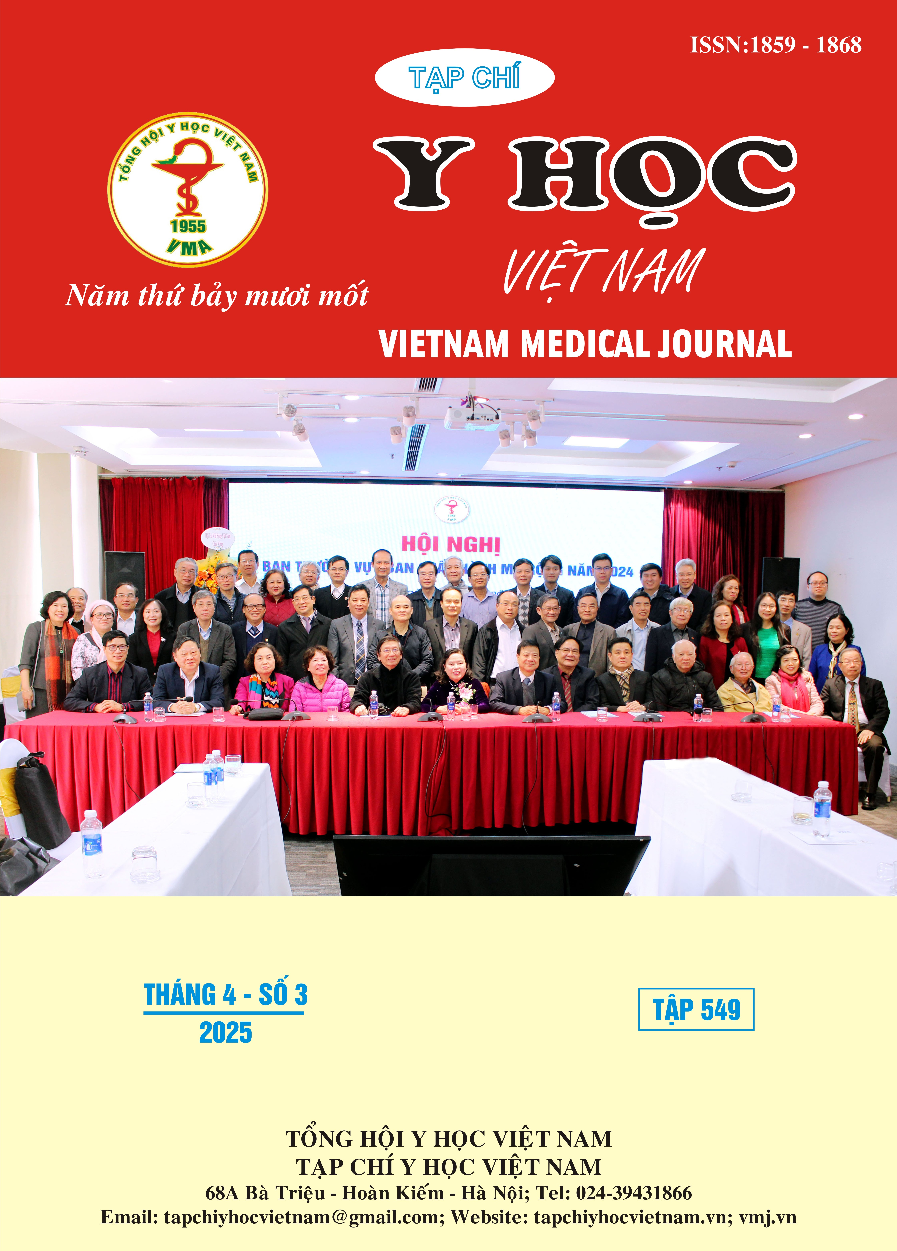INTERLEUKIN-31 LEVELS IN PATIENTS WITH STEVENS-JOHNSON SYNDROME AND TOXIC EPIDERMAL NECROLYSIS
Main Article Content
Abstract
Toxic epidermal necrolysis (TEN) and Stevens-Johnson syndrome (SJS) are acute, life-threatening mucocutaneous reactions, often triggered by drugs. Th2 cells and interleukin-31 (IL-31), secreted by Th2 cells, are thought to be involved in SJS/TEN. This study aimed to determine the role and influencing factors of IL-31 in SJS/TEN patients. This was a cross-sectional descriptive study in which serum IL-31 and IL-15 levels in SJS/TEN patients and healthy controls were measured using the fluorescence covalent microbead immunosorbent assay. The results included 26 patients (12 males, 14 females; 10 SJS patients and 16 TEN patients) with median ages of 49.5 and 51 years in the SJS and TEN groups, respectively, along with 18 healthy controls. The median interleukin-31 level in the SJS group was 0.22 pg/ml (interquartile range: 0.14-2.85 pg/ml), significantly higher than that in the healthy control group (p<0.05). The TEN group had a median IL-31 level of 0.14 pg/ml (interquartile range: 0.14-0.81 pg/ml), which was not significantly higher than that of the healthy group. A correlation was observed between interleukin-31 and interleukin-15 levels in the SJS group (r=0.899, p<0.001). Interleukin-31 may play a role in the pathogenesis of SJS/TEN, particularly in SJS.
Article Details
Keywords
Toxic epidermal necrolysis, Stevens-Johnson syndrome, interleukin-31, interleukin-15
References
2. Roujeau JC, Stern RS. Severe adverse cutaneous reactions to drugs. N Engl J Med. 1994;331(19):1272-1285. doi:10.1056/NEJM199411103311906
3. Walsh S, Lee HY, Creamer D. Chapter 119. Severe Cutaneous Adverse Reactions to Drug. In: Rook’s Textbook of Dermatology. Vol 4. 10th edition.;:119.13-119.23.
4. Ogiji ED, Aboheimed N, Ross K, et al. Greater mechanistic understanding of the cutaneous pathogenesis of Stevens–Johnson syndrome/toxic epidermal necrolysis can shed light on novel therapeutic strategies: a comprehensive review. Curr Opin Allergy Clin Immunol. 2024;24(4):218. doi:10.1097/ACI.0000000000000993
5. Caproni M, Torchia D, Schincaglia E, et al. Expression of cytokines and chemokine receptors in the cutaneous lesions of erythema multiforme and Stevens–Johnson syndrome/toxic epidermal necrolysis. Br J Dermatol. 2006;155(4):722-728. doi:10.1111/j.1365-2133.2006.07398.x
6. Datsi A, Steinhoff M, Ahmad F, Alam M, Buddenkotte J. Interleukin-31: The “itchy” cytokine in inflammation and therapy. Allergy. 2021;76(10):2982-2997.
7. Su SC, Mockenhaupt M, Wolkenstein P, et al. Interleukin-15 Is Associated with Severity and Mortality in Stevens-Johnson Syndrome/Toxic Epidermal Necrolysis. J Invest Dermatol. 2017; 137(5):1065-1073. doi:10.1016/j.jid.2016.11.034
8. Lefaucheur JP, Valeyrie-Allanore L, Ng Wing Tin S, et al. Chronic pain: a long-term sequela of epidermal necrolysis (Stevens–Johnson syndrome/toxic epidermal necrolysis) – prevalence, clinical characteristics and risk factors. J Eur Acad Dermatol Venereol. 2021;35(1):188-194. doi:10.1111/jdv.16891
9. Trần Thị Huyền, Phạm Đình Hòa, Phạm Thị Lan. High levels of serum interferon-gamma in patients with Stevens-Johnson syndrome/toxic epidermal necrolysis. Journal of Medical Research. 2020; 127 E6 (3):67-72. doi:10.52852/ tcncyh.v152i4.703


